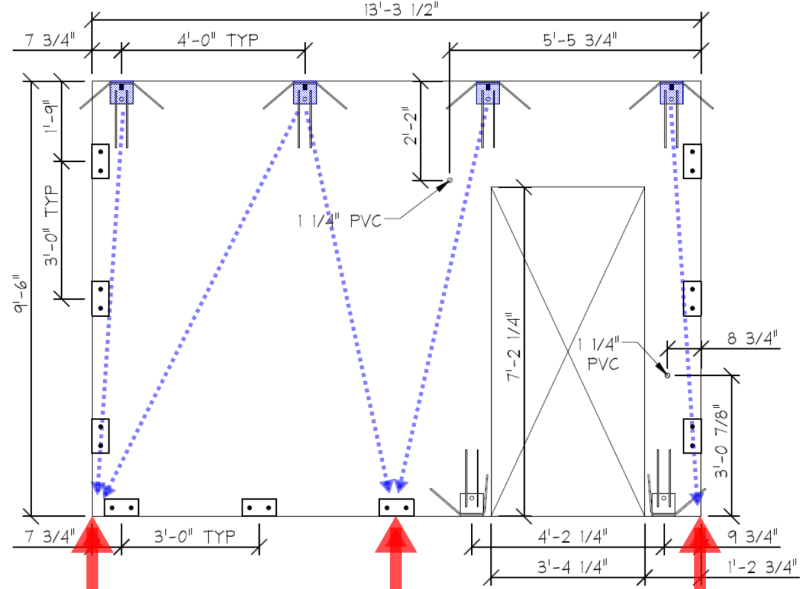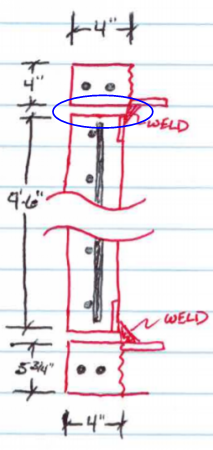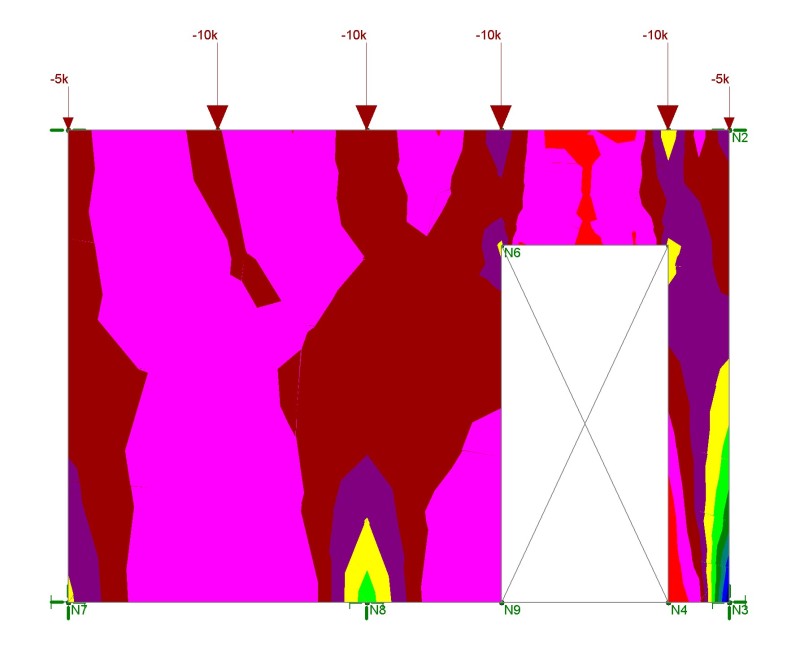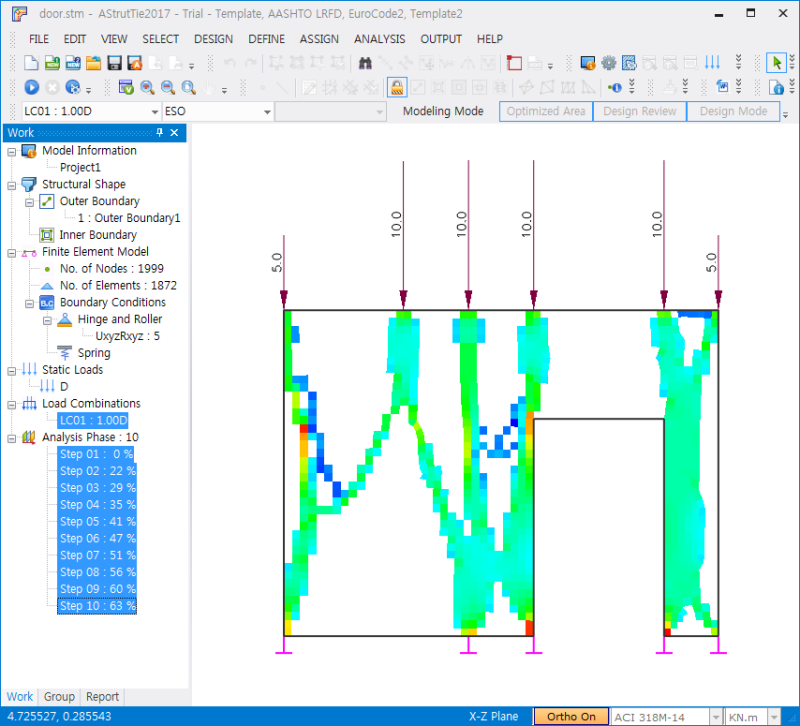I have a 4" thick, precast wall (~14' long). I want to use the sidewalls of the 10'x14' unit to span piers (0', 7', and 14'). The walls must support the roof distributed loads and the floor distributed loads (applied as point loads at welded connections between floor and walls). One of the 14' sidewalls has a door opening. So my plan was to use the one sidewall as a deep beam and the other sidewall contains shallower beam along the entire length with the depth equal to the portion of the wall above the door (27"). I will consider the solid portions of the wall below this beam to be columns and these wall portions also need to take my floor load to the 27" beam in the function of a tension member. The wall's typical reinforcement is #4 bars at 12" o.c. each way.
So my question is: Are the vertical #4 bars at 12" o.c. considered stirrups and able to be used as my shear reinforcement? I always thought that the shear bars needed to enclose the longitudinal reinforcement with some kind of hook, but from reading the definition in ACI 318-14, a stirrup is "reinforcement used to resist shear and torsion forces in a member; typically deformed bars, deformed wires, or welded wire reinforcement either single leg or bent into L, U, or rectangular shapes and located perpendicular to, or at an angle to, longitudinal reinforcement.
I am having trouble showing the 27" deep, 4" wide beam to satisfy shear requirements without shear reinforcement (i.e. Vc>ΦVn). I shouldn't have a problem though if I can use the #4 vertical bars in my Vs.
Supplemental questions:
1.) Is there a need to check wall below the assumed beam? In reality, the beam becomes deeper wherever the door is not located. I'm just conservatively assuming the beam depth is limited to that which is above the door.
2.) Is there a need to check the deep beam of the other sidewall for buckling/lateral-torsional buckling somehow? It is welded to roof and floor slab members. I calculate the cracked bending moment. As long as I am below that I should be good? If some other buckling checks need to be done, where do I find them in the ACI?
3.) Should I combine my dead load beam forces with my shearwall forces somehow? Again, if yes, please let me know the ACI reference. Shear from beam is orthogonal to shear from shearwall, so they different reinforcement to resist the shears: horizontal reinforcement is for shearwall and vertical reinforcement is for beam.
Additional information: The unit weighs 38,000 lbs dead load, roof live load = 150 psf, and floor live load = 200 psf. Seismic is pretty high: Ss=1.0 and S1=0.6. The attached is the elevation of the sidewall with the door opening in case someone has other recommendations.
Juston Fluckey, SE, PE, AWS CWI
Engineering Consultant
So my question is: Are the vertical #4 bars at 12" o.c. considered stirrups and able to be used as my shear reinforcement? I always thought that the shear bars needed to enclose the longitudinal reinforcement with some kind of hook, but from reading the definition in ACI 318-14, a stirrup is "reinforcement used to resist shear and torsion forces in a member; typically deformed bars, deformed wires, or welded wire reinforcement either single leg or bent into L, U, or rectangular shapes and located perpendicular to, or at an angle to, longitudinal reinforcement.
I am having trouble showing the 27" deep, 4" wide beam to satisfy shear requirements without shear reinforcement (i.e. Vc>ΦVn). I shouldn't have a problem though if I can use the #4 vertical bars in my Vs.
Supplemental questions:
1.) Is there a need to check wall below the assumed beam? In reality, the beam becomes deeper wherever the door is not located. I'm just conservatively assuming the beam depth is limited to that which is above the door.
2.) Is there a need to check the deep beam of the other sidewall for buckling/lateral-torsional buckling somehow? It is welded to roof and floor slab members. I calculate the cracked bending moment. As long as I am below that I should be good? If some other buckling checks need to be done, where do I find them in the ACI?
3.) Should I combine my dead load beam forces with my shearwall forces somehow? Again, if yes, please let me know the ACI reference. Shear from beam is orthogonal to shear from shearwall, so they different reinforcement to resist the shears: horizontal reinforcement is for shearwall and vertical reinforcement is for beam.
Additional information: The unit weighs 38,000 lbs dead load, roof live load = 150 psf, and floor live load = 200 psf. Seismic is pretty high: Ss=1.0 and S1=0.6. The attached is the elevation of the sidewall with the door opening in case someone has other recommendations.
Juston Fluckey, SE, PE, AWS CWI
Engineering Consultant



![[wink] [wink] [wink]](/data/assets/smilies/wink.gif) Just like I will never pronounce RISA as REE ZA, it is RY ZA to me.
Just like I will never pronounce RISA as REE ZA, it is RY ZA to me.

